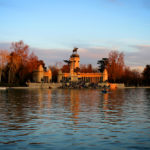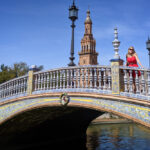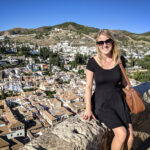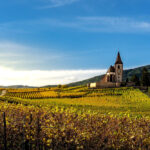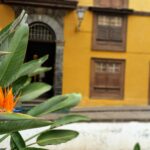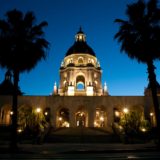Semana Santa in Andalucía
One of the biggest reasons I wanted to be in Spain in the spring and therefore chose to spend an entire school year here was Semana Santa, Holy Week. Spain is very Catholic and is also big on festivals and celebrations, so they go all out for Semana Santa, especially in certain cities like Sevilla. Semana Santa is also Spain’s version of spring break, so so Connie and I planned to use the first part of our time off from school to check out Semana Santa in Sevilla and then visit other cities in Andalucía, the southern region of Spain that is also my favorite part of the country (other than Madrid).
We took an overnight bus to Sevilla, meaning we arrived around 7am after barely being able to sleep on the bus, but Sevilla was so enchanting that my lack of sleep didn’t bother me. The sun was out, the streets were empty and peaceful because it was so early on a Sunday morning, and the entire city was filled with an amazing flower scent. Sevilla was already one of my favorite cities (I had been there in 2006 and again in December), but this trip made me love it anymore.
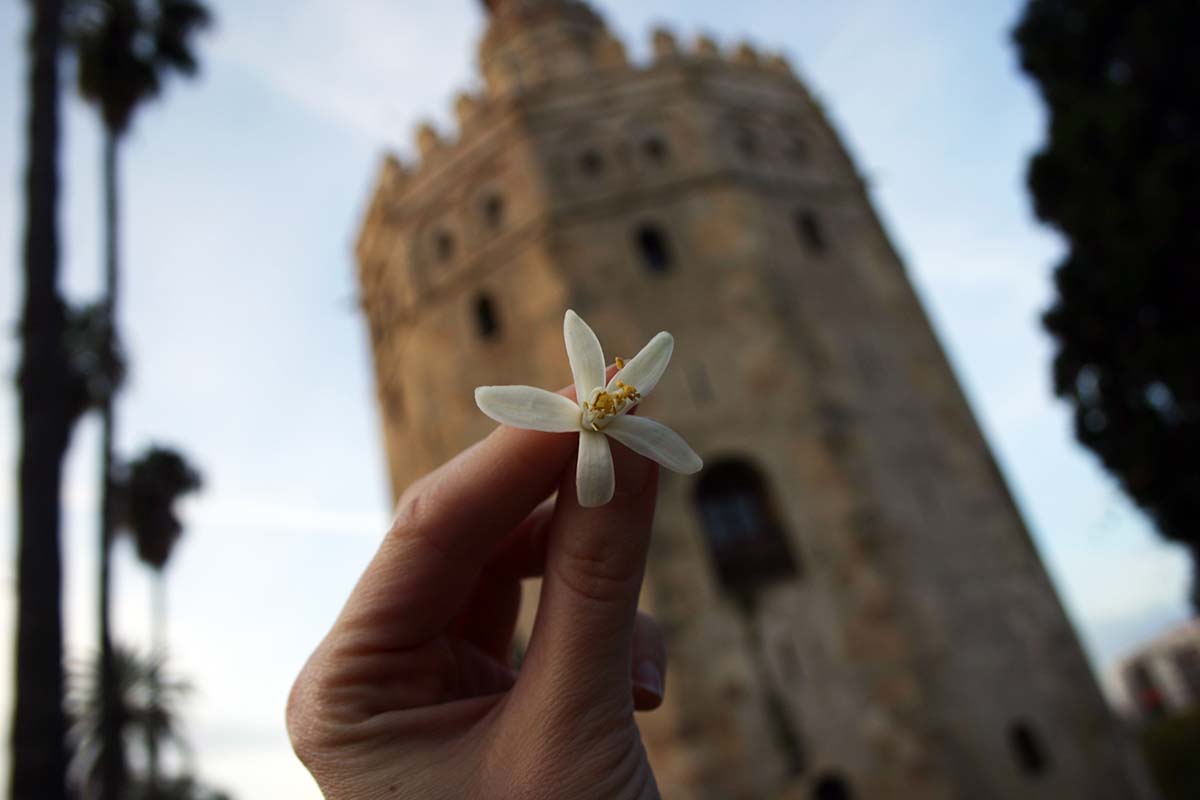
A fantastic-smelling flower in front of the Torre de Oro.
We started at the cathedral, the largest gothic cathedral and the third largest church in the world, which also houses the remains of Christopher Columbus (apparently his body has been moved multiple times across the world since his death, but it’s now in Sevilla since that’s where he began his journey to the Americas). They were holding a special Palm Sunday mass in the cathedral, so we watched some of the mass and walked around the cathedral. The mass involved a procession that went outside the cathedral and circled around it, so we followed that. Catholic rituals are really interesting to watch because they’re so elaborate.
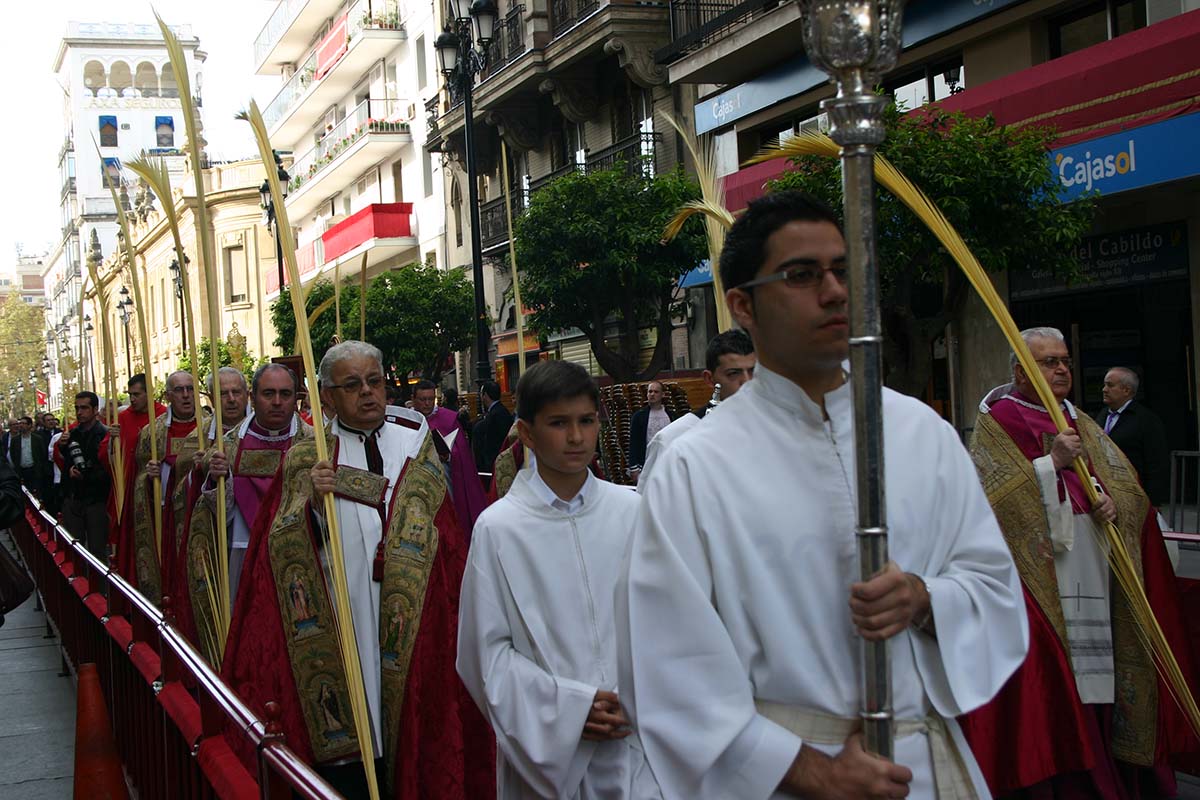
Palm Sunday procession.
Connie had never been to Sevilla before, so I led her through my favorite part of town, Barrio Santa Cruz, the former Jewish quarter with small cobblestone streets, whitewashed houses, and flower-filled patios. Then we visited Plaza de España, which I had somehow missed during my first two trips to Sevilla. It’s grandiose and kind of amazing, even though it was under construction when we visited, so the pond was emptied and the construction took away from its beauty. The plaza has paintings and benches for each of Spain’s 50 provinces (provinces are kind of like the equivalent of counties), so we took pictures of each of the provinces we had visited.
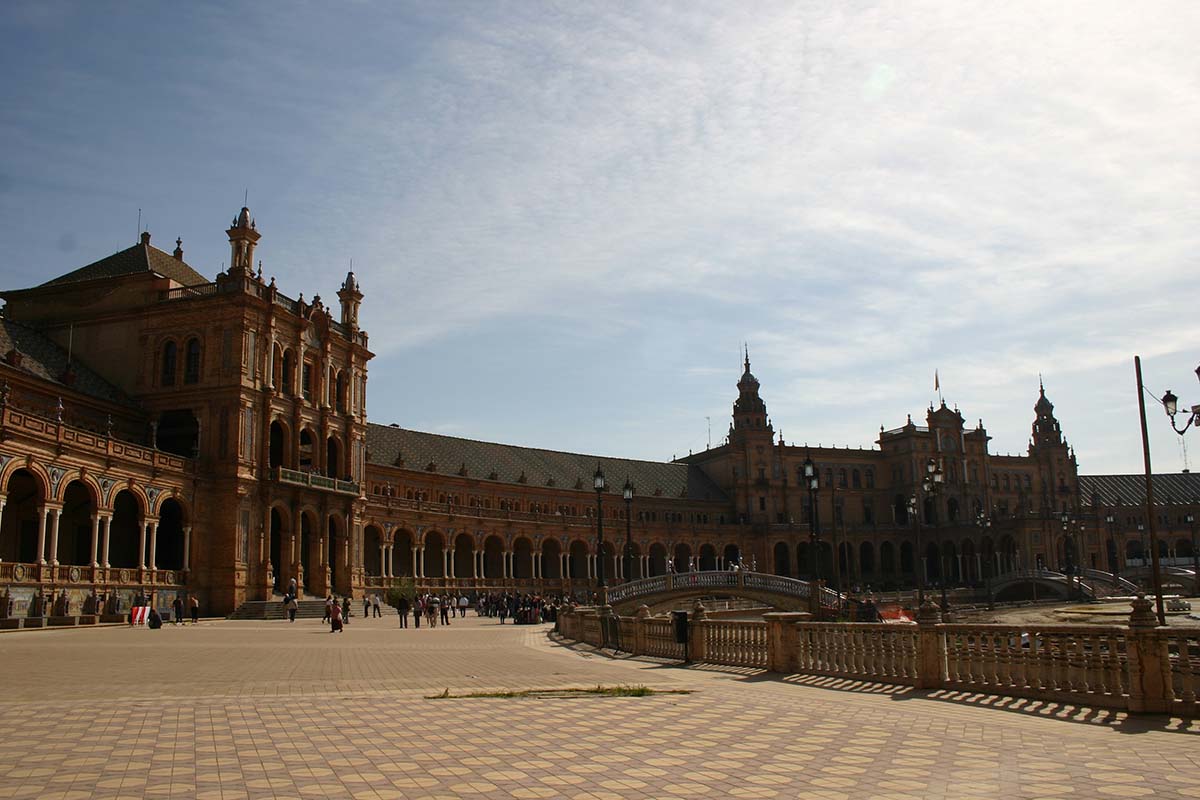
Plaza de España, which was used in Star Wars Episode II.
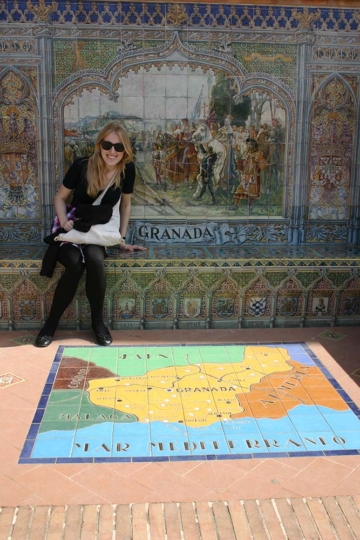
Posing with Granada.
We walked around some more and then returned to the city center to watch the first of that day’s Semana Santa processions. The funny thing about Semana Santa processions is that the Nazarenos who walk in the processions wear robes that were later adopted by the Ku Klux Klan, so seeing crowds of people cheering for parades of KKK-looking people is initially a bit startling and creepy to Americans, even though I knew that was the typical Semana Santa costume.

Sort of creepy, right?
After watching the processions for a while, we visited the Alcázar, a Moorish palace/fort where we got free admission (yay for student discounts!). The architecture is really cool (a bit like the Alhambra in Granada), and the gardens are gorgeous and tranquil, so we spent a while relaxing there, then watched some more Semana Santa processions before taking a bus to our next destination, Málaga.
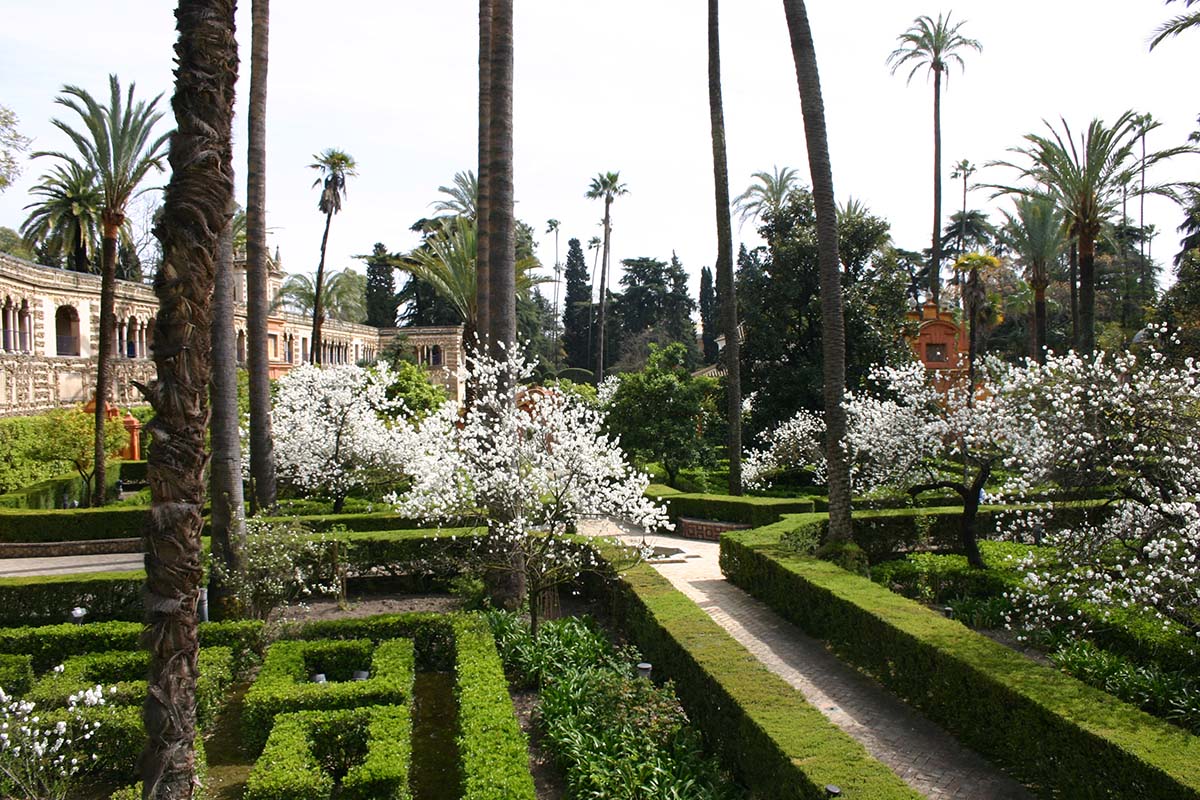
Gardens of the Alcázar.
We arrived at Málaga late at night, and we ran into some problems locating the hostel because the normal bus routes were cut off due to their Semana Santa processions and then a local told us the wrong stop to get off the bus, but we eventually found it, checked in, and then went to bed. Our hostel was right across the street from the beach, which was awesome, so the next morning, we walked along the beach to the town center, saw the cathedral and a few other main sights, grabbed lunch at a bocadillo place, and did some shopping. Then we lay out on the beach for a few hours. It felt so nice to be lying in the sun in a bathing suit, and it felt like a true spring break!
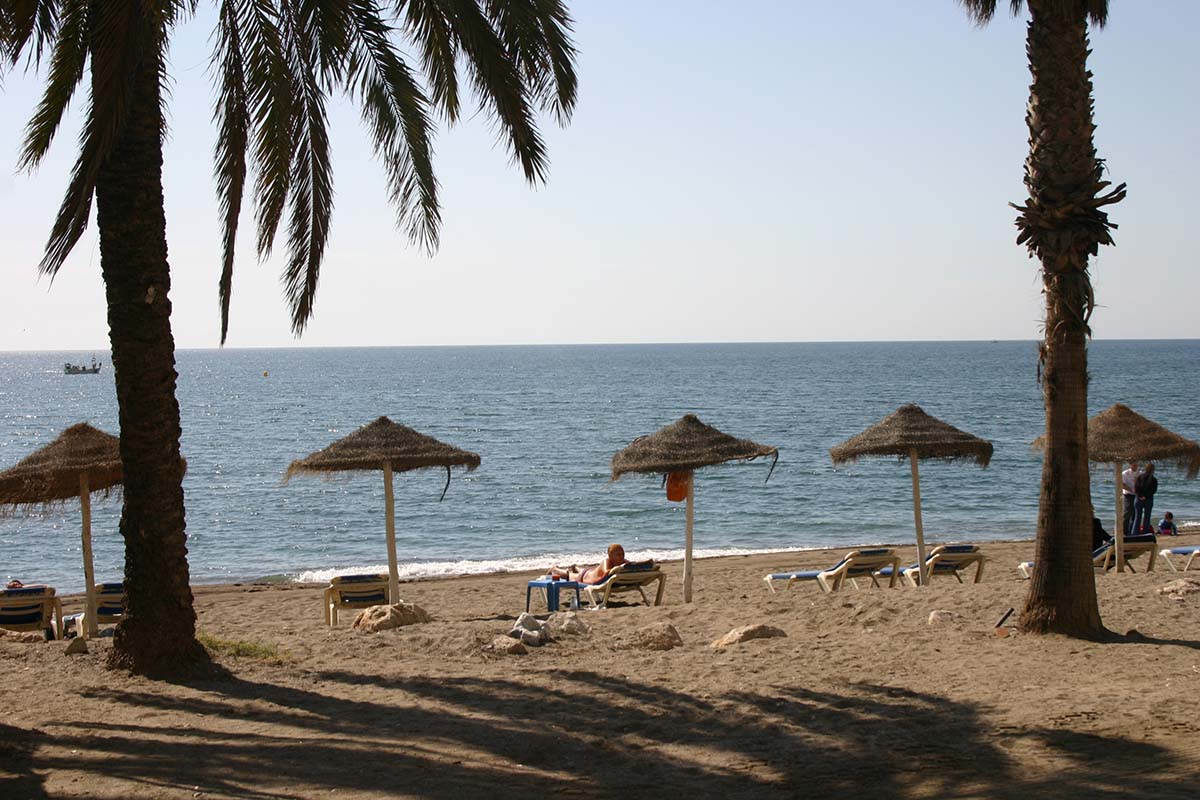
Beach in Málaga.
It looked like a storm was coming in, so we returned to the hostel, though no storm ever came. We then went back out to see Málaga’s Semana Santa processions. Though Sevilla has the most well-known Semana Santa celebrations, Málaga definitely celebrates it as well, so we watched those processions, visited a tapas bar, and then were happy to get out of the overcrowded city center. Málaga has a bad reputation throughout Spain as being overly touristy and urban, but I really liked it. It was the one city of this trip I hadn’t visited before, and I loved the atmosphere and beaches.
The next day, we took a bus to Nerja, a small city south of Granada that I had spent a few hours in in 2006 when I was in Granada, though I hadn’t seen much of the town at the time. This time, I saw that it was amazingly adorable and serene and beautiful. We checked into our cheap hostel that was more like a cute bed and breakfast and then walked around the city and spent some time relaxing on the beach. Seriously, a perfect way to spring break. There’s not a ton to do in Nerja, but we visited some shops and wandered around the small streets.
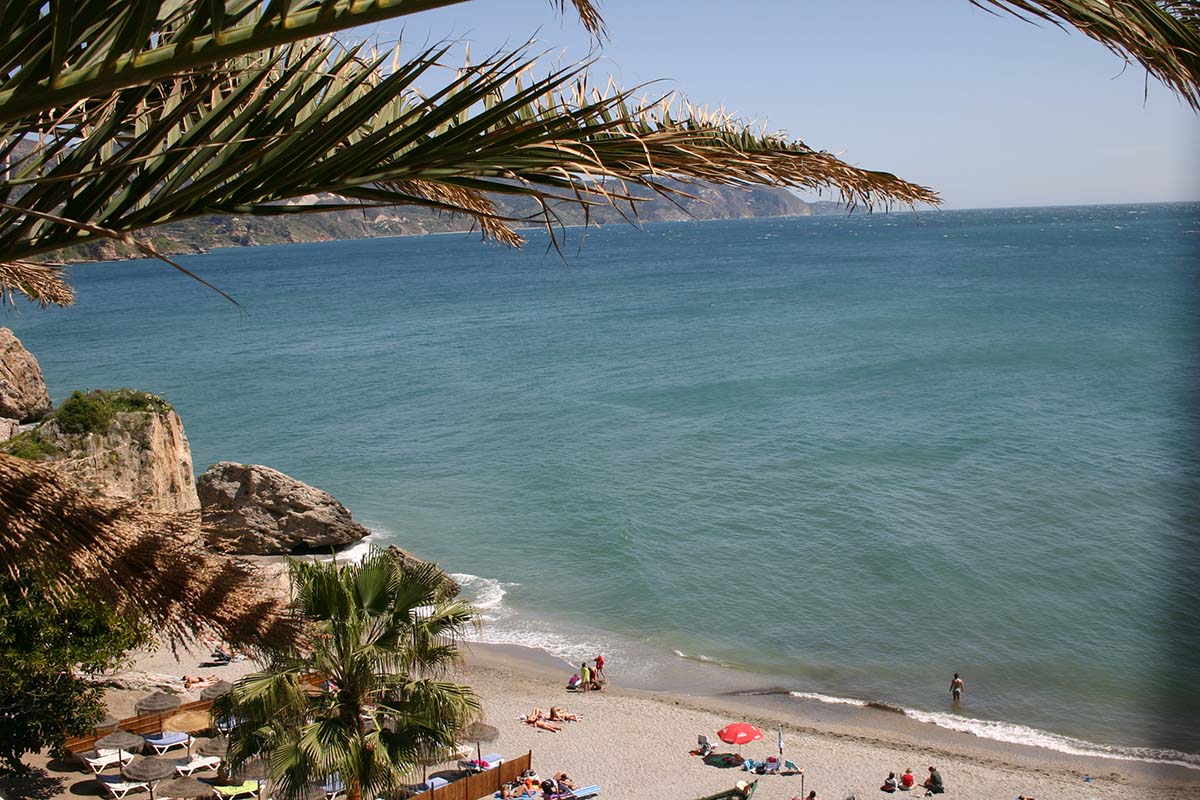
Nerja!
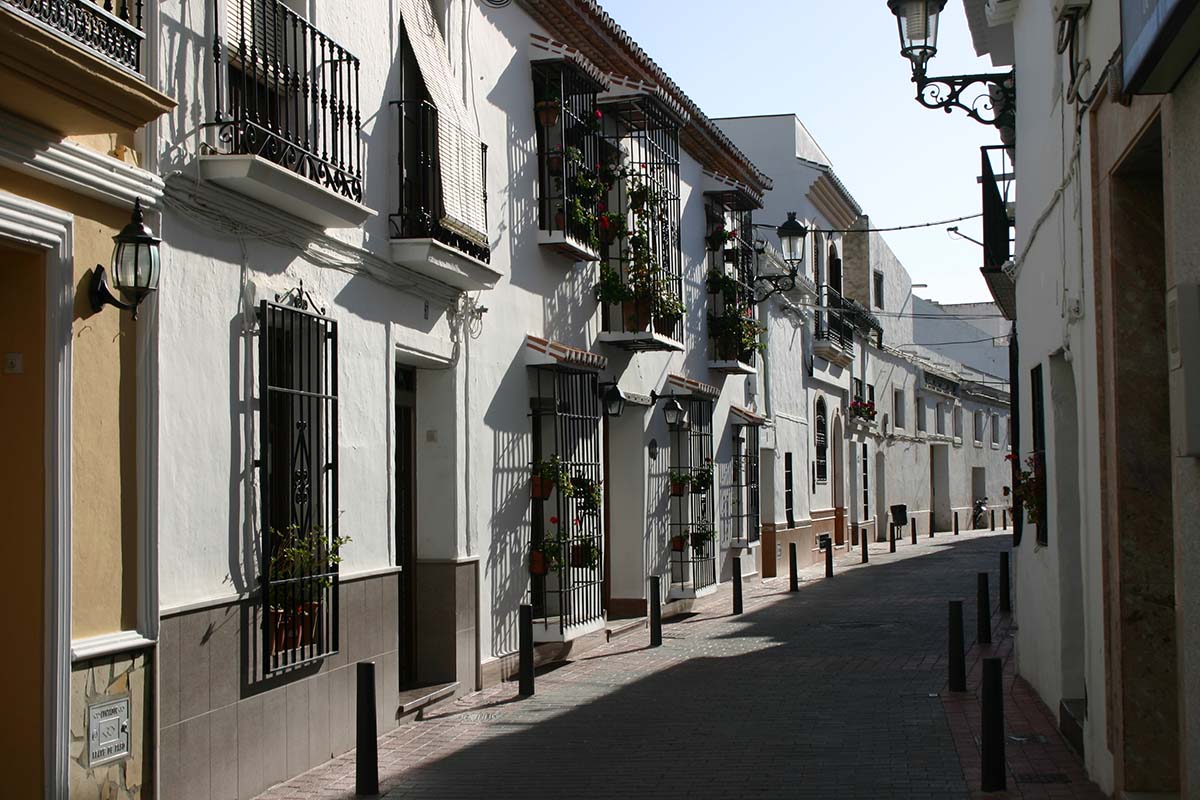
More of Nerja.
The last day of our trip, we took a bus from Nerja to Frigiliana, just as I had done in 2006, a city where I decided in 2006 I needed to spend my retirement years because it’s incredibly beautiful and peaceful. It’s situated on top of a hill and is filled with tiny cobblestone streets, flowers, and whitewashed stucco houses. That’s how I described Barrio Santa Cruz in Sevilla, but Frigiliana is, like, the even smaller, more gorgeous version of that. It’s kind of like a Spanish Santorini. I would venture to say that Frigiliana is the most beautiful city I’ve visited. There, we wandered the streets and visited a few small shops. I looove Frigiliana. If you’re ever in the area, definitely, definitely spend a few hours there.
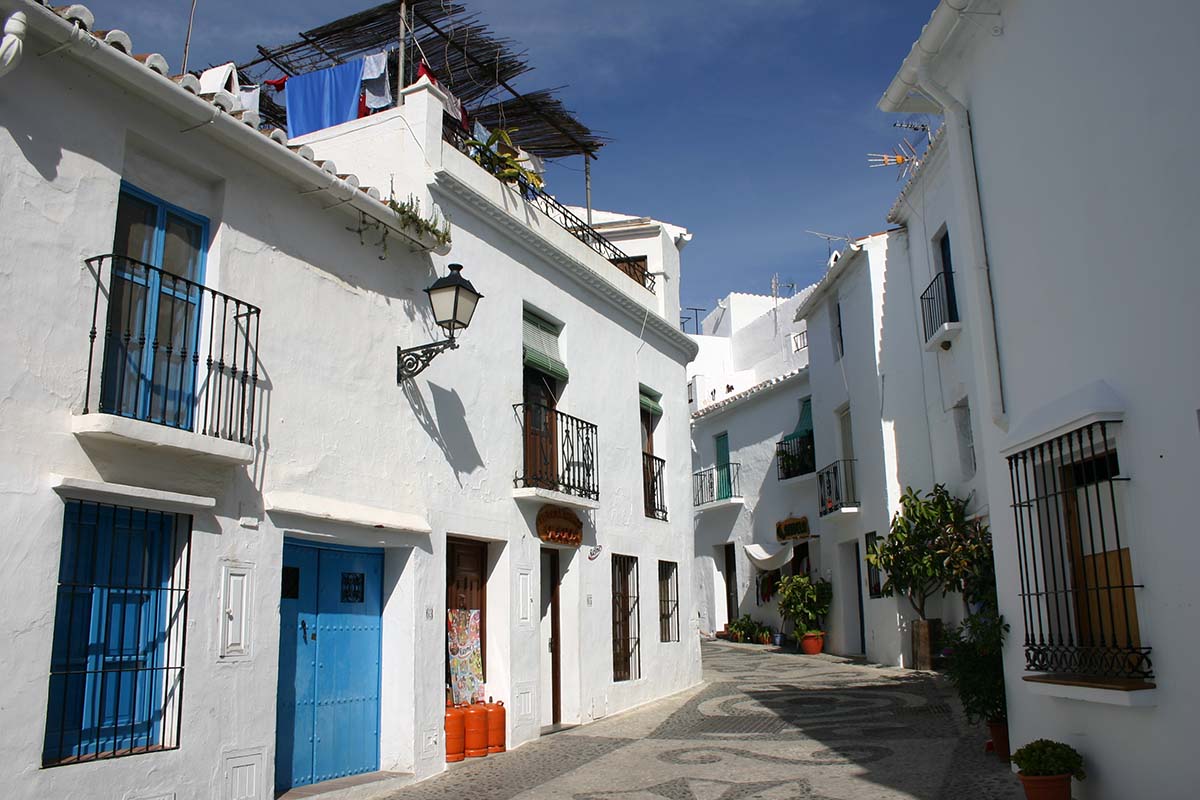
Frigiliana. It’s way prettier in person.
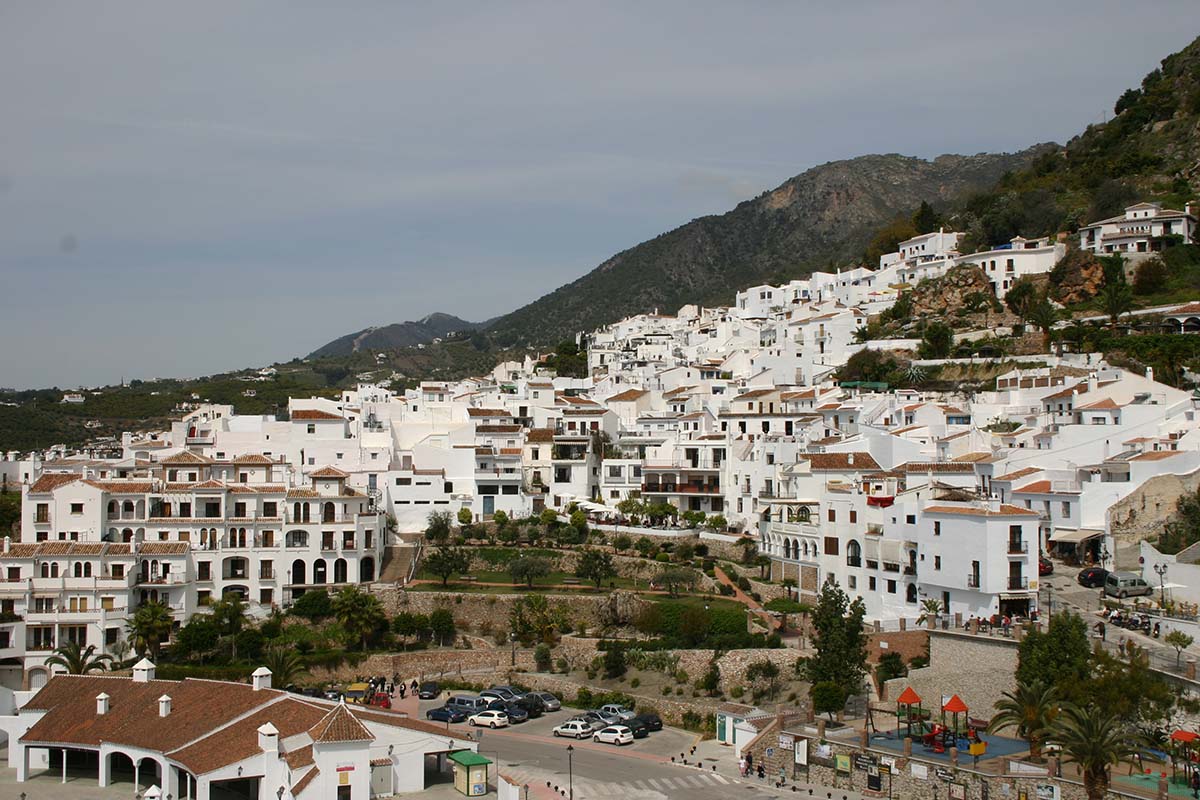
Another view of Frigiliana.
We then returned to Nerja and took a bus back to Madrid (which made a quick stop in Granada), thus completing a perfect first half of spring break. Andalucía has always been my favorite part of Spain, but I fell even more in love with it on this trip. And then I got to spend the second half of my spring break in Italy! Best spring break ever? Definitely.
